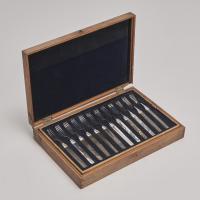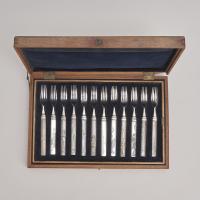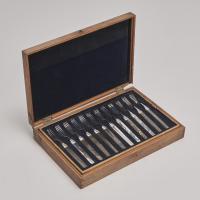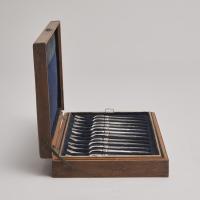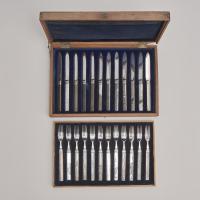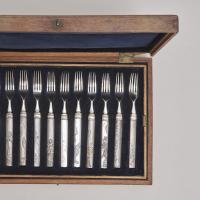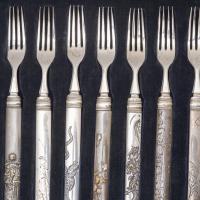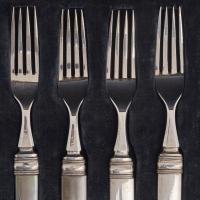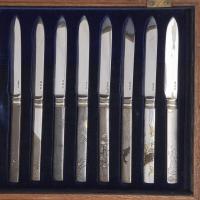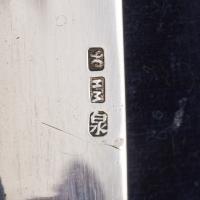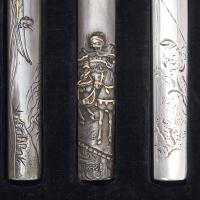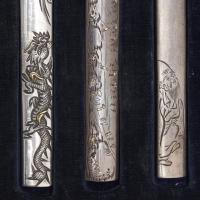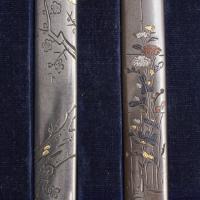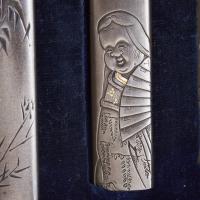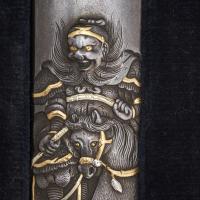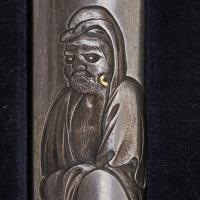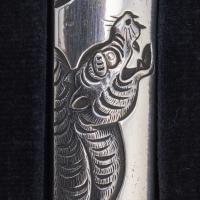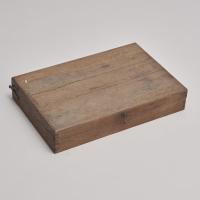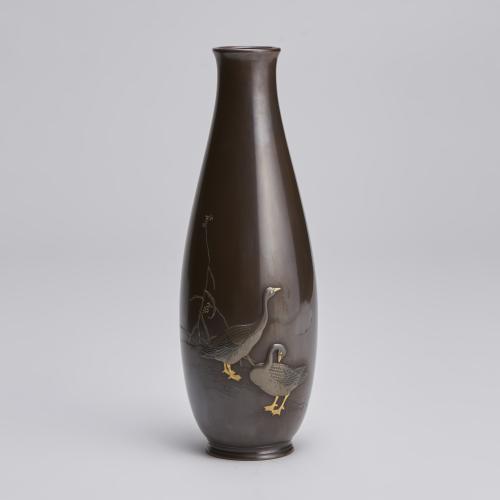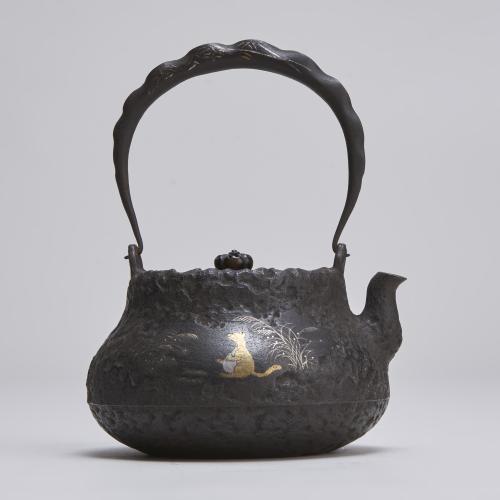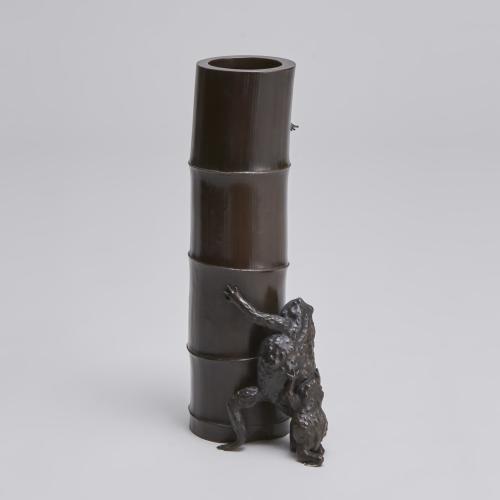
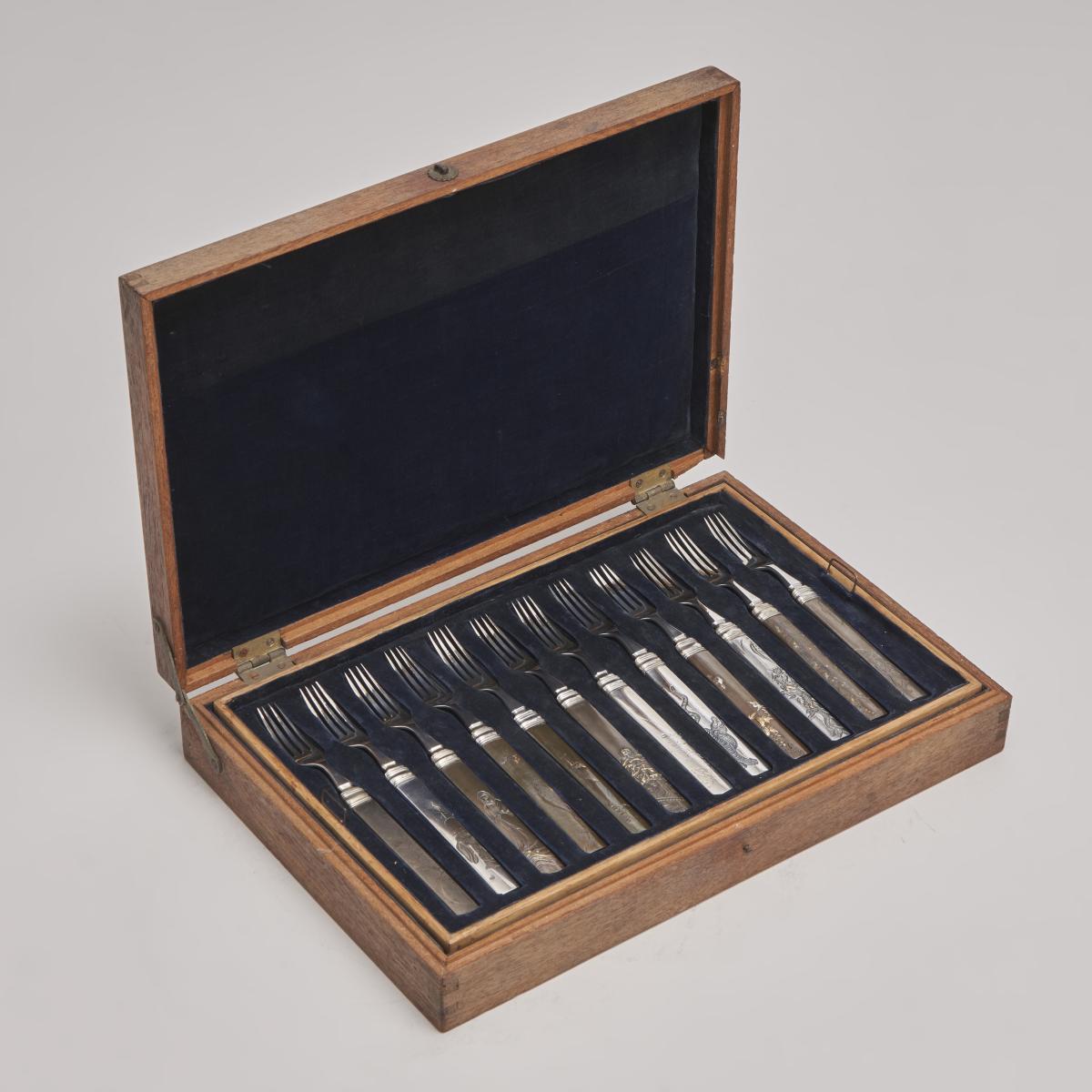
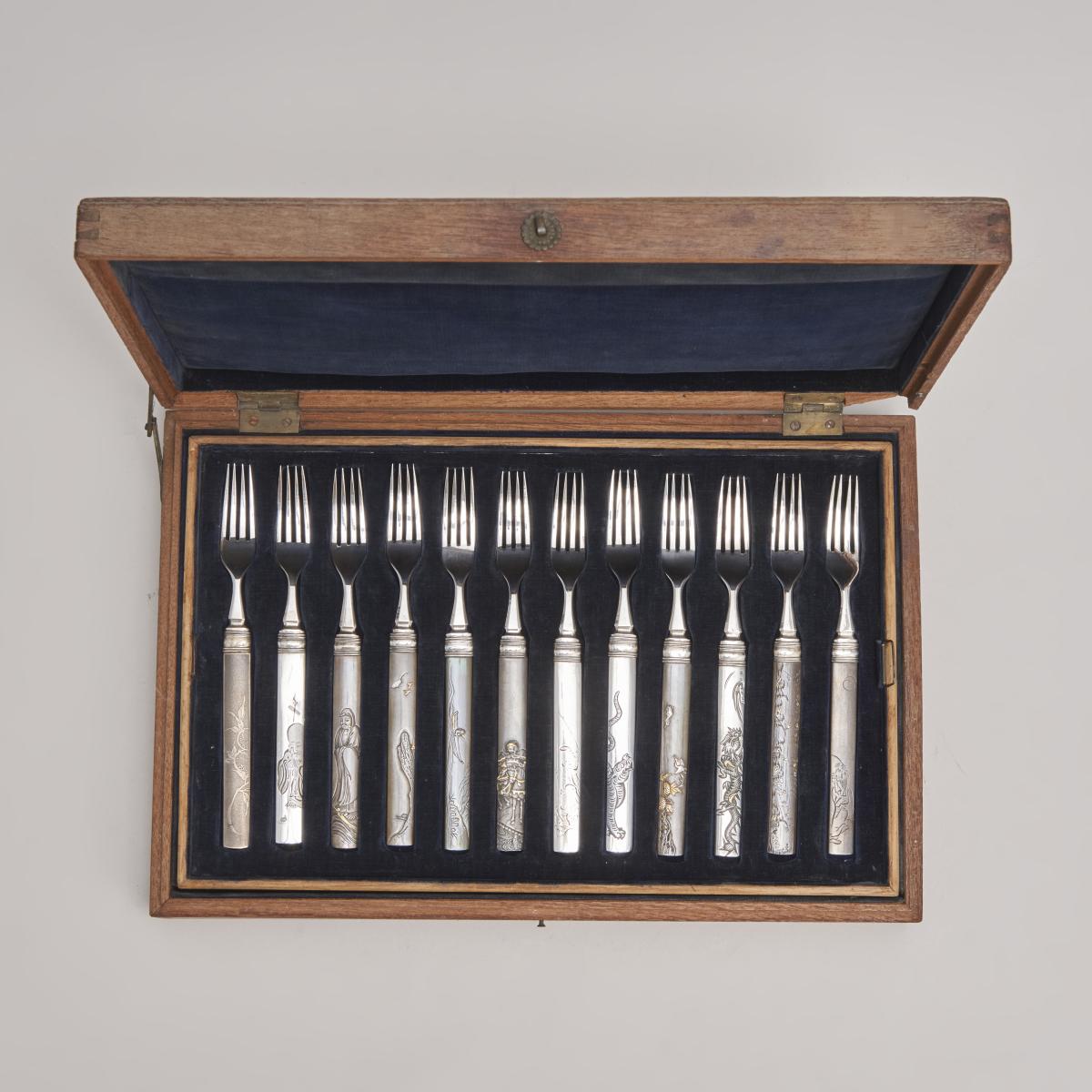
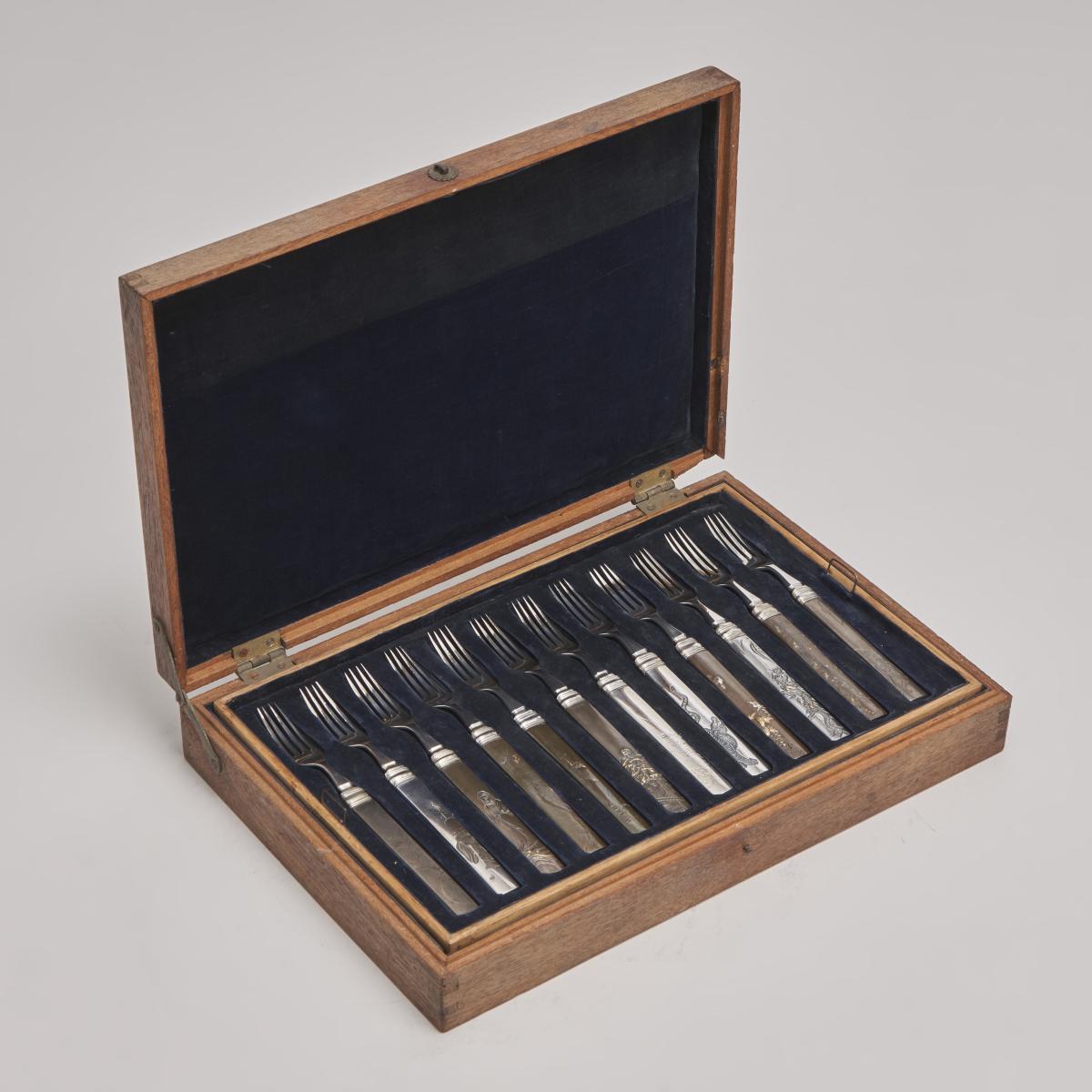
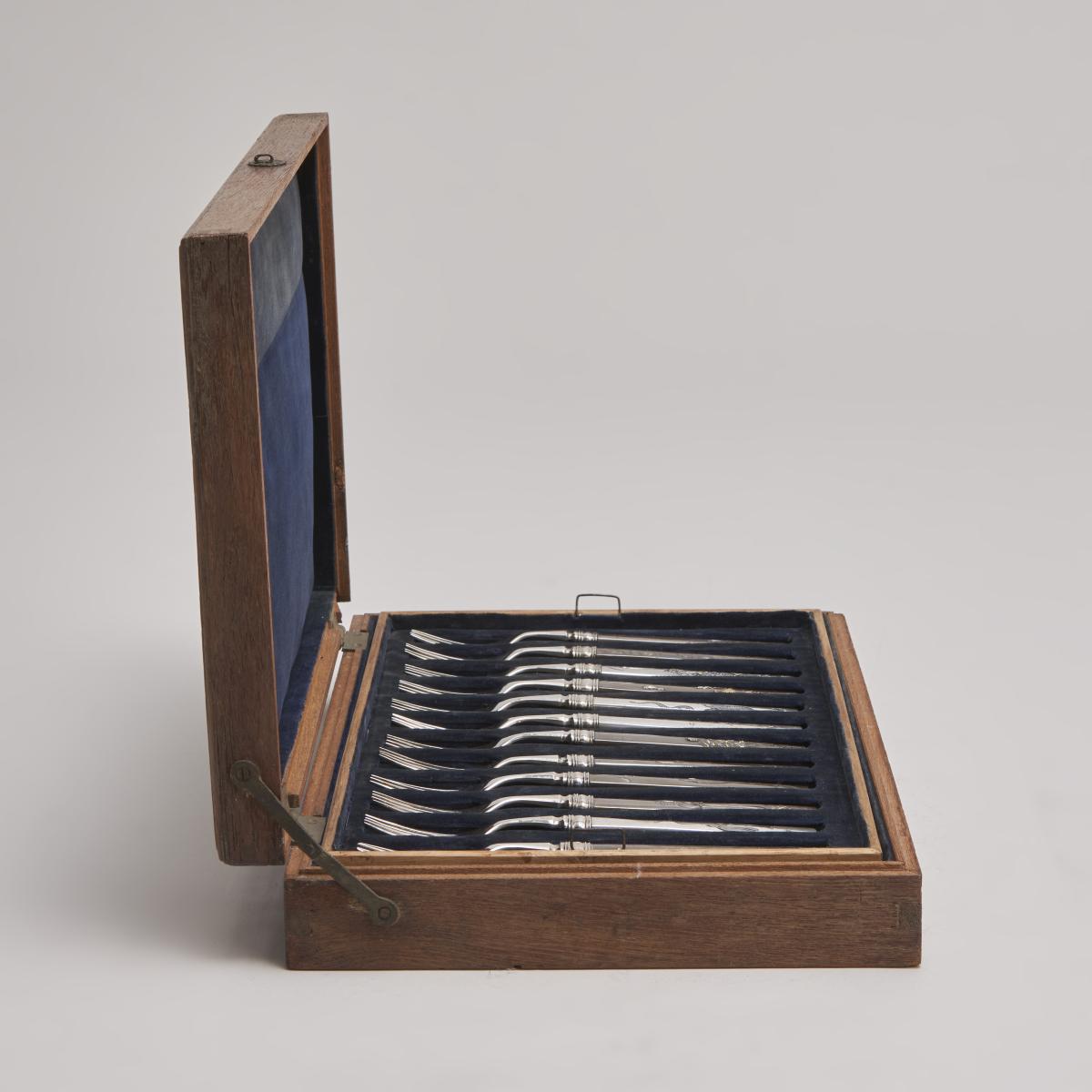
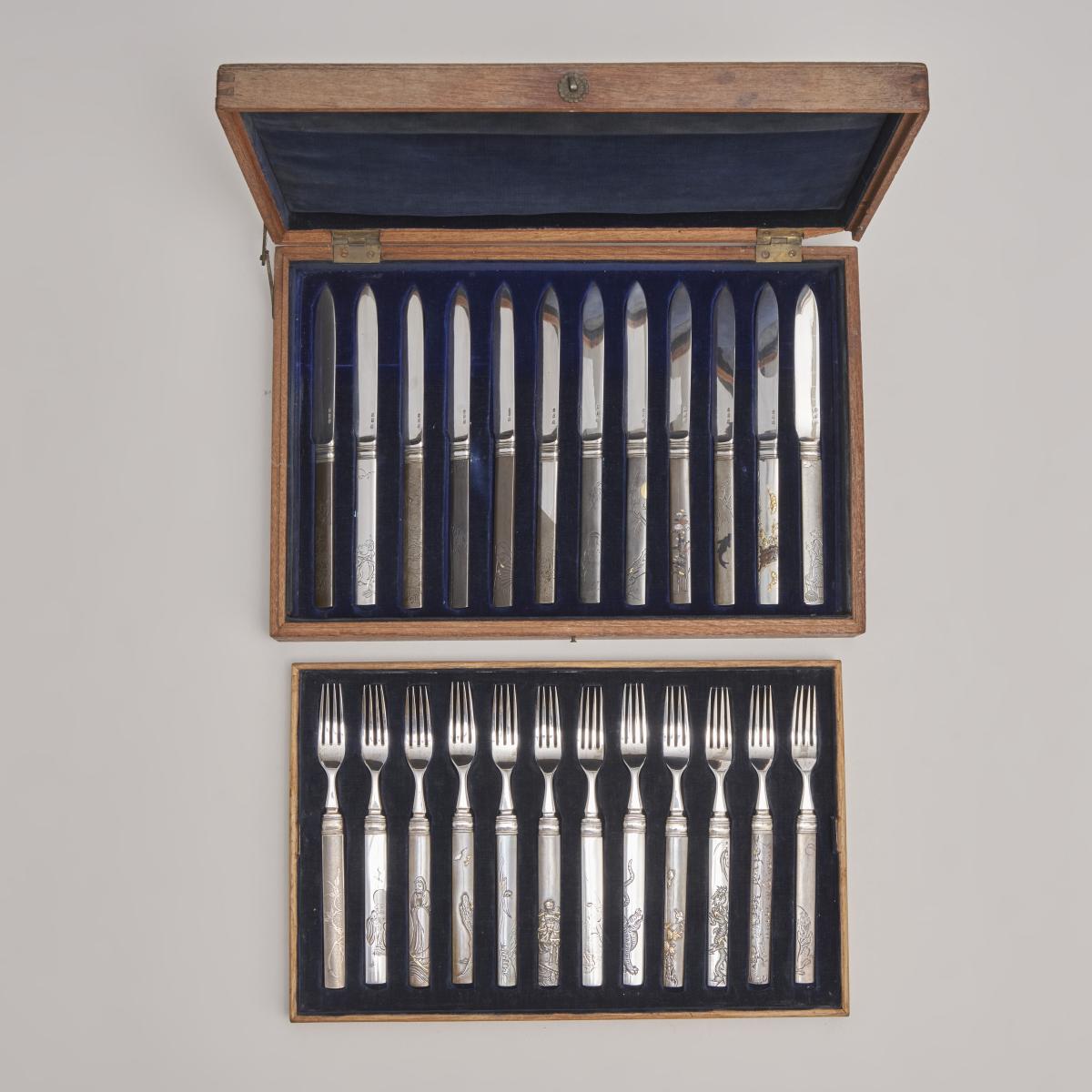
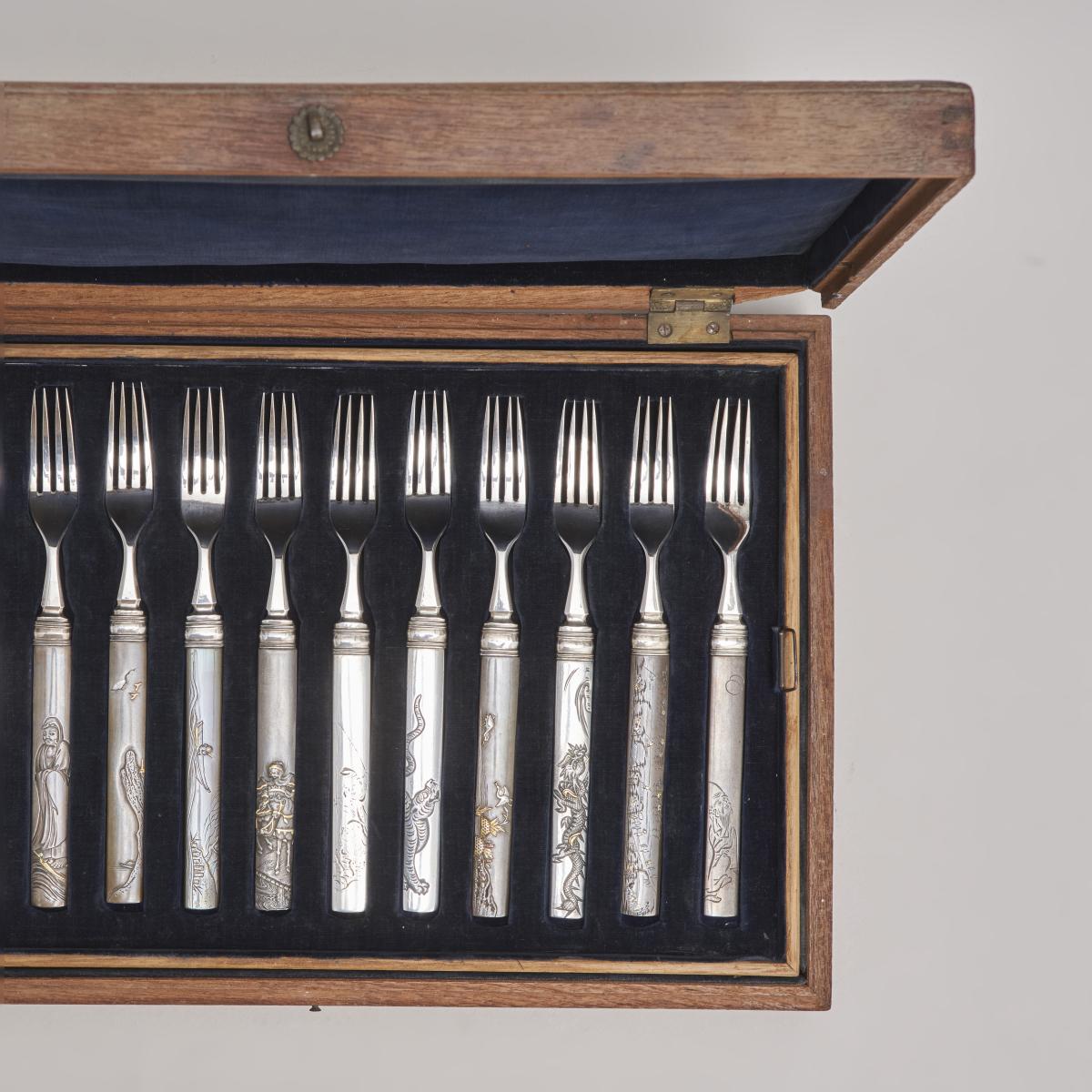
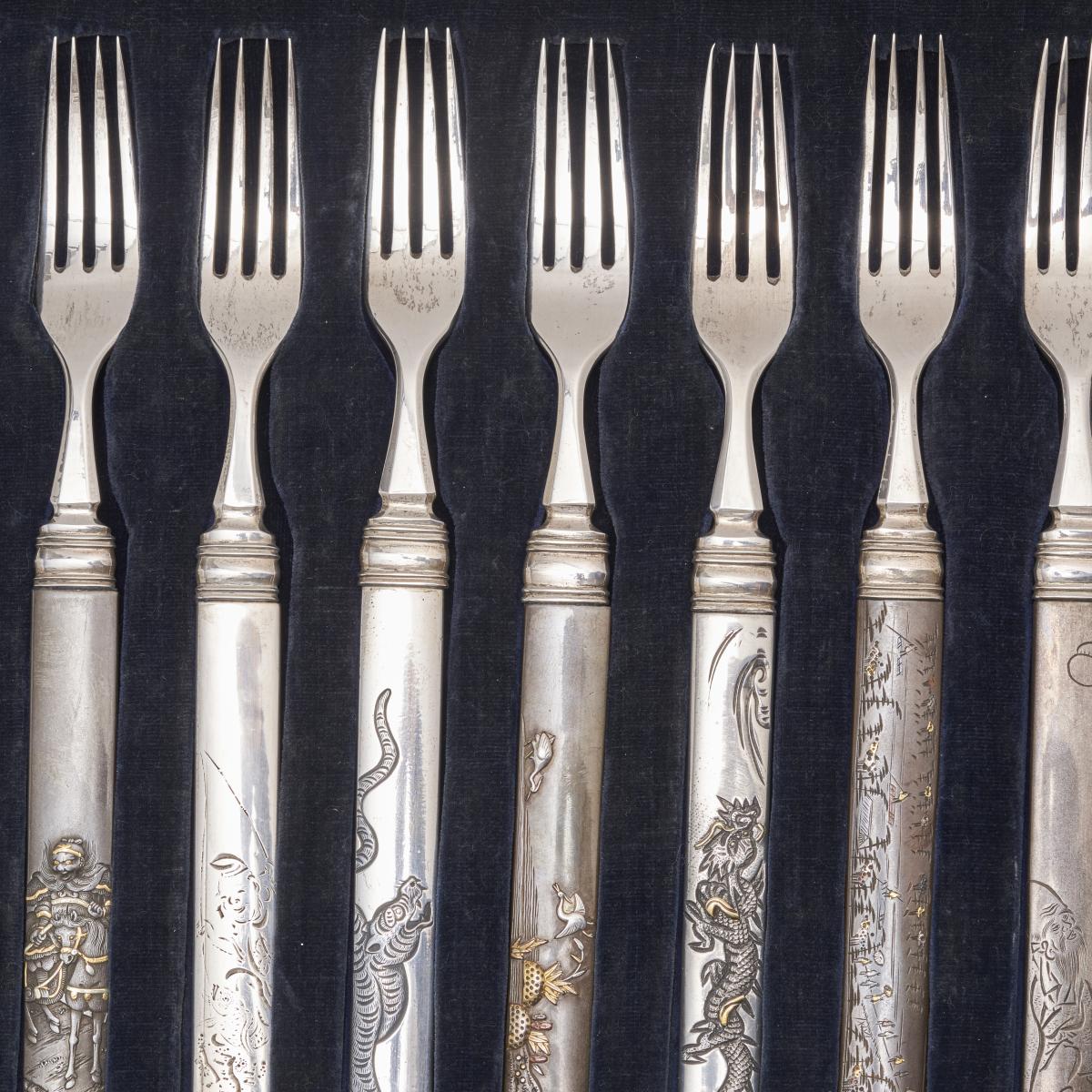
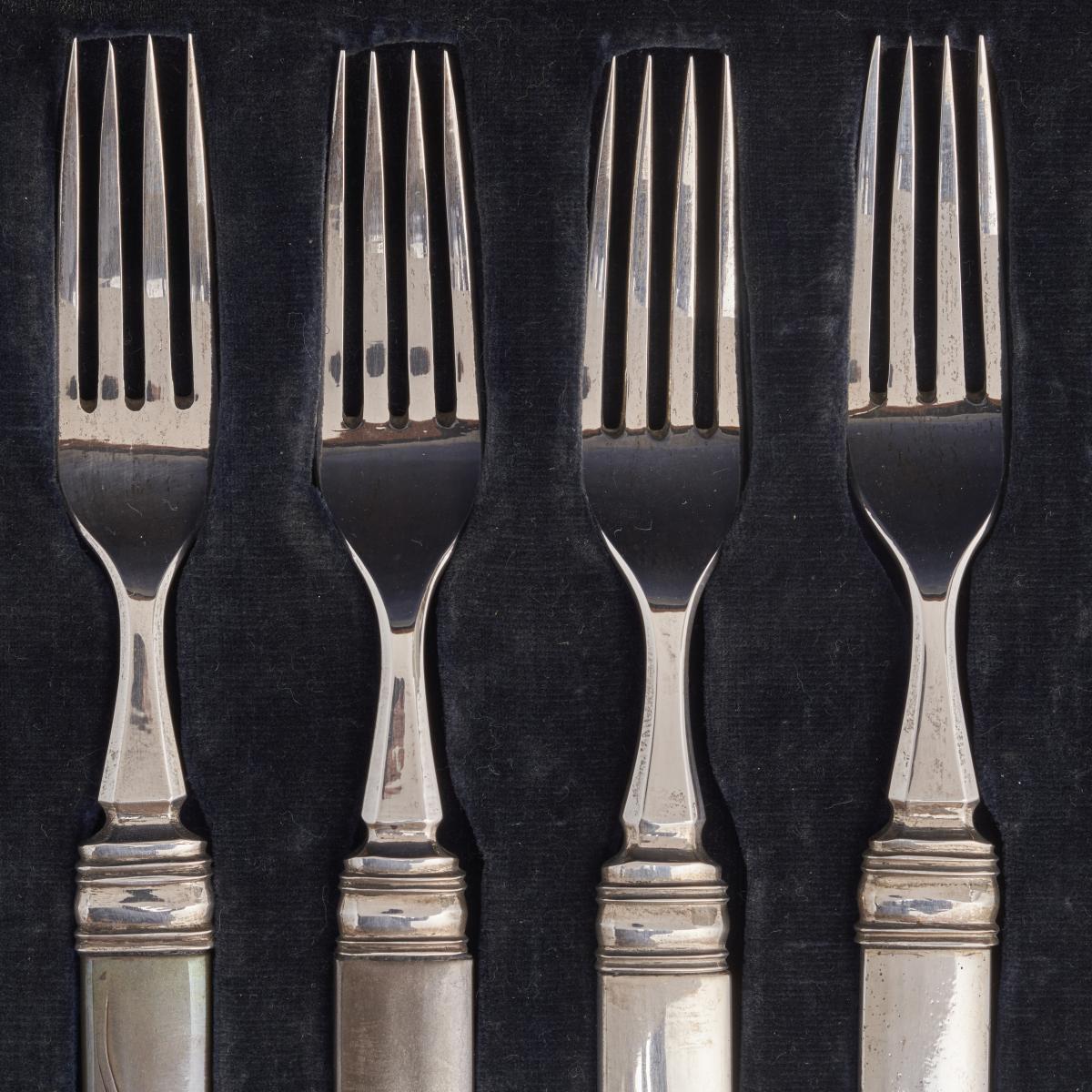
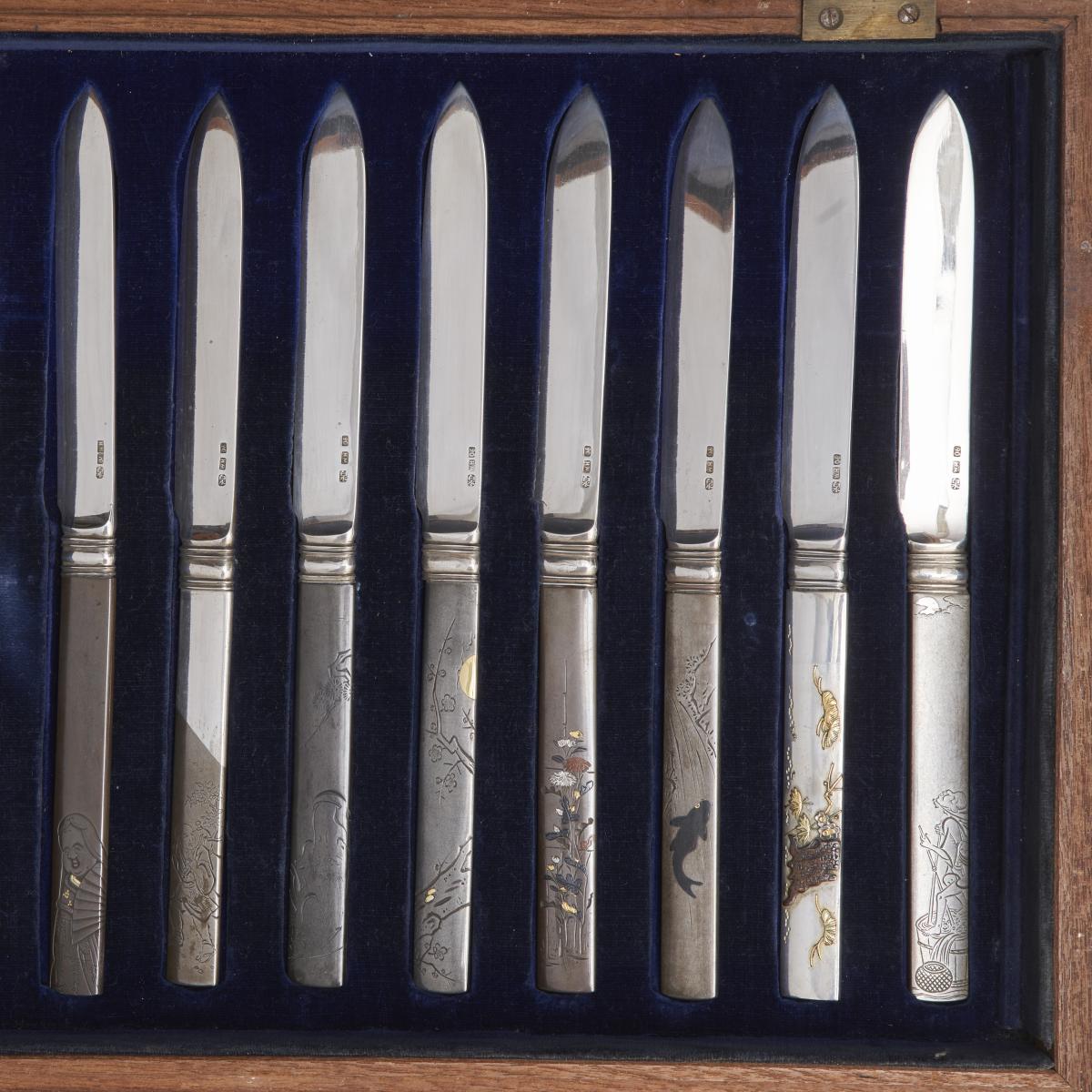
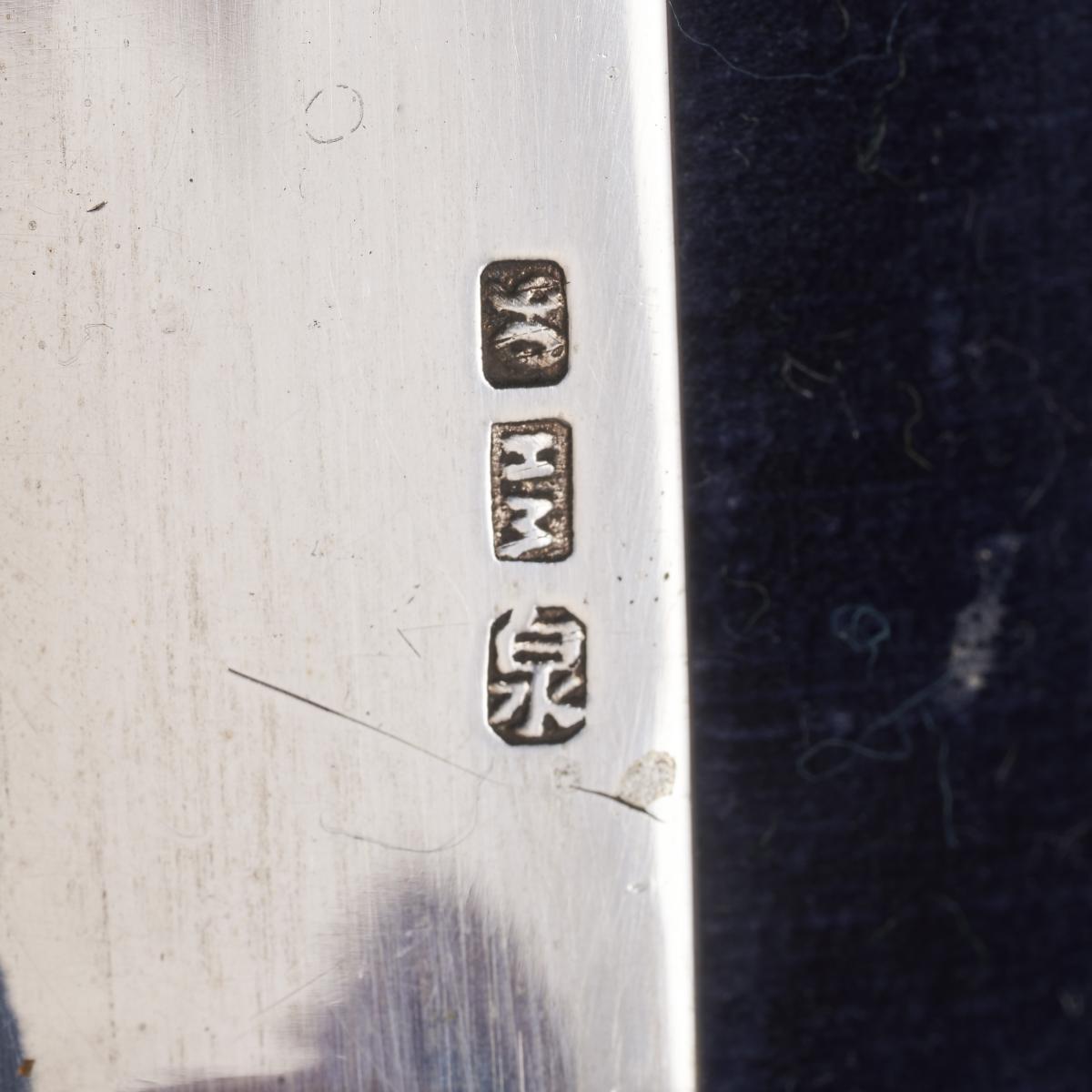
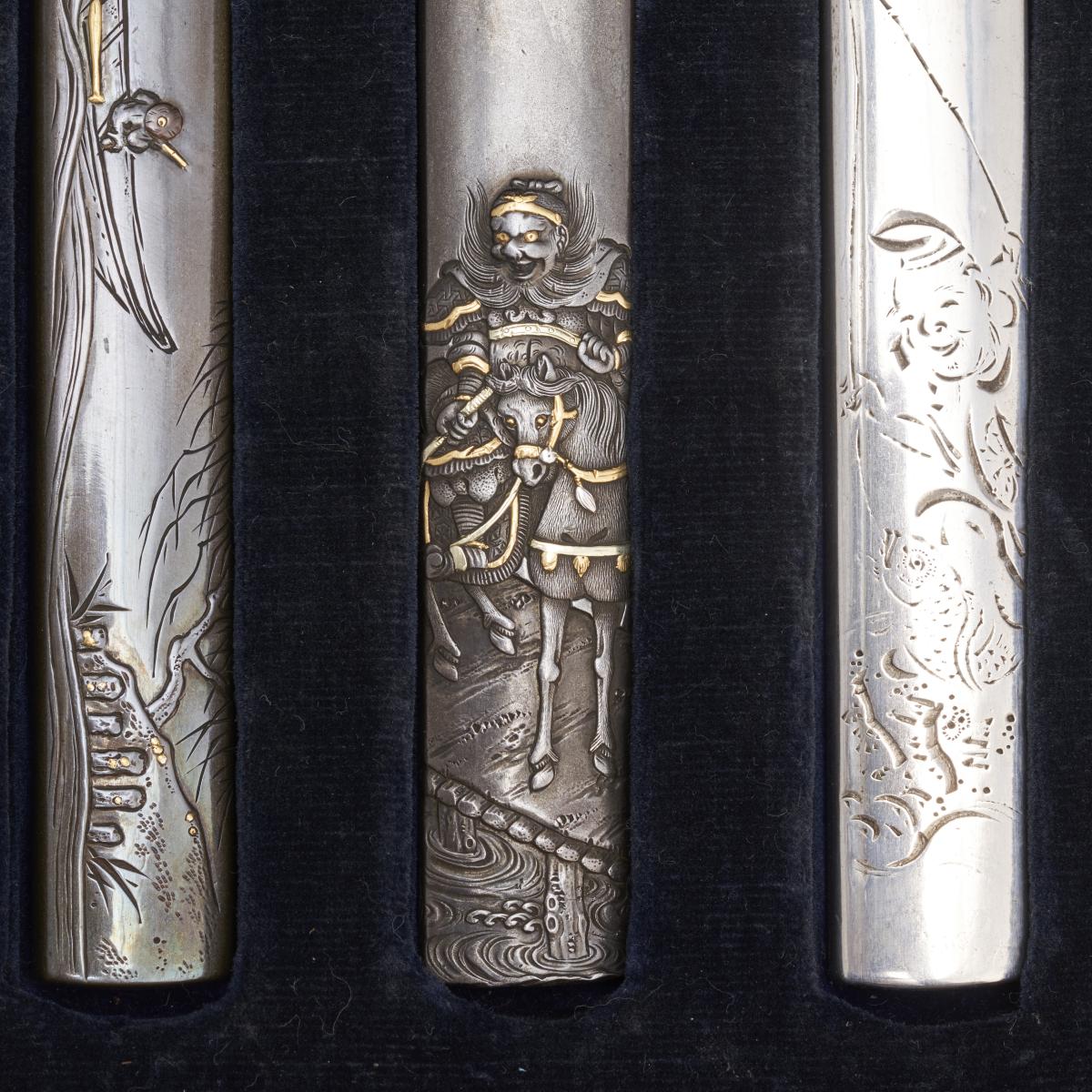
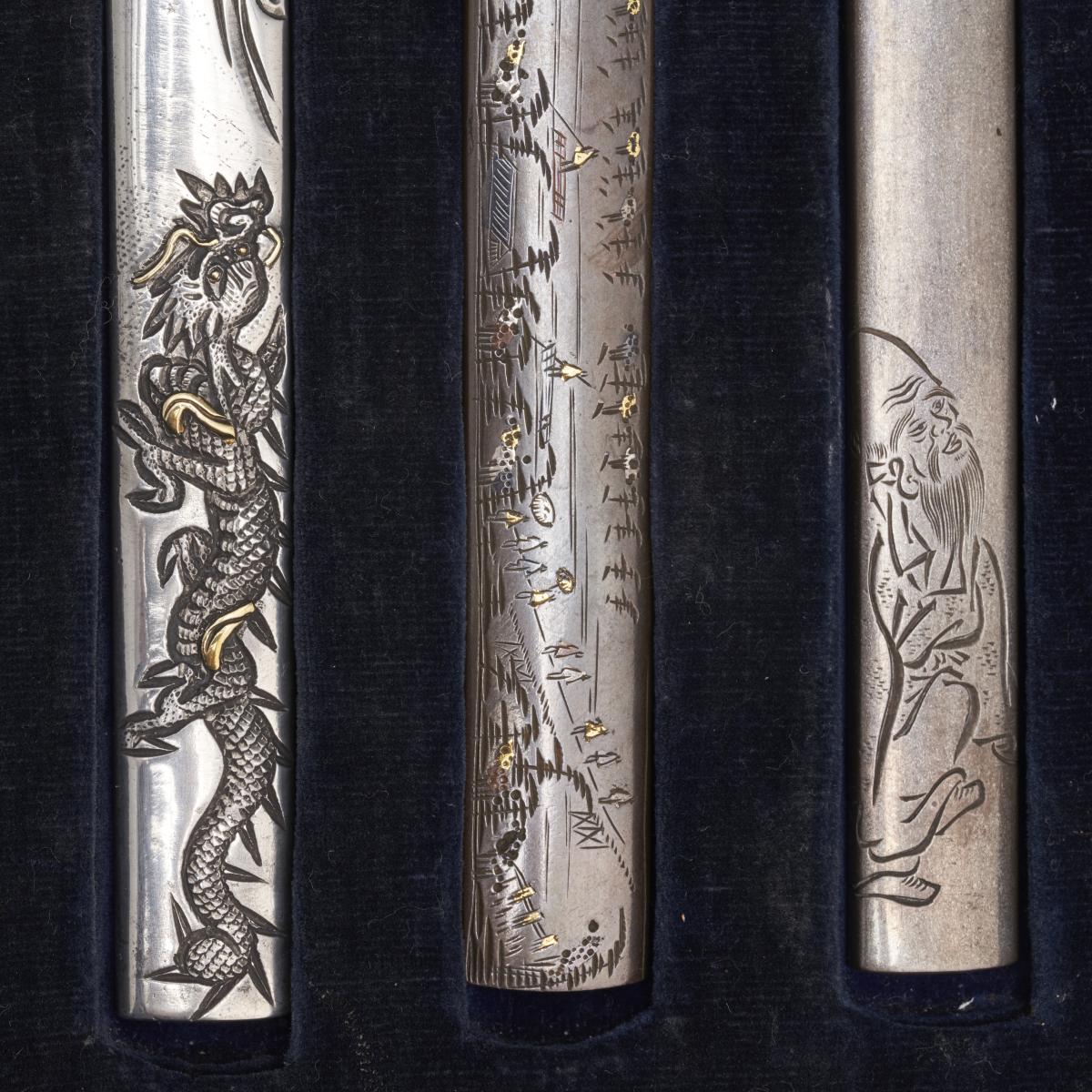
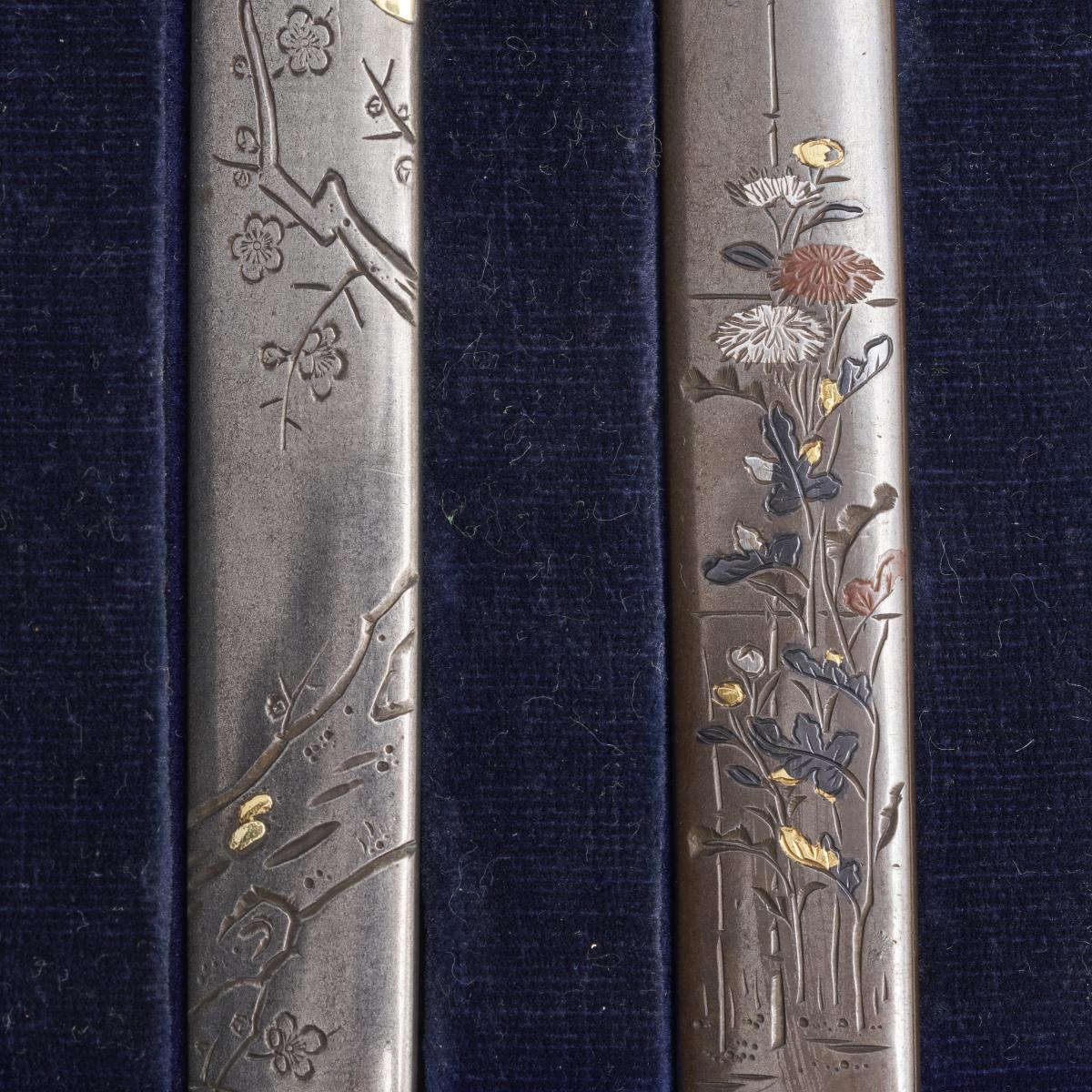
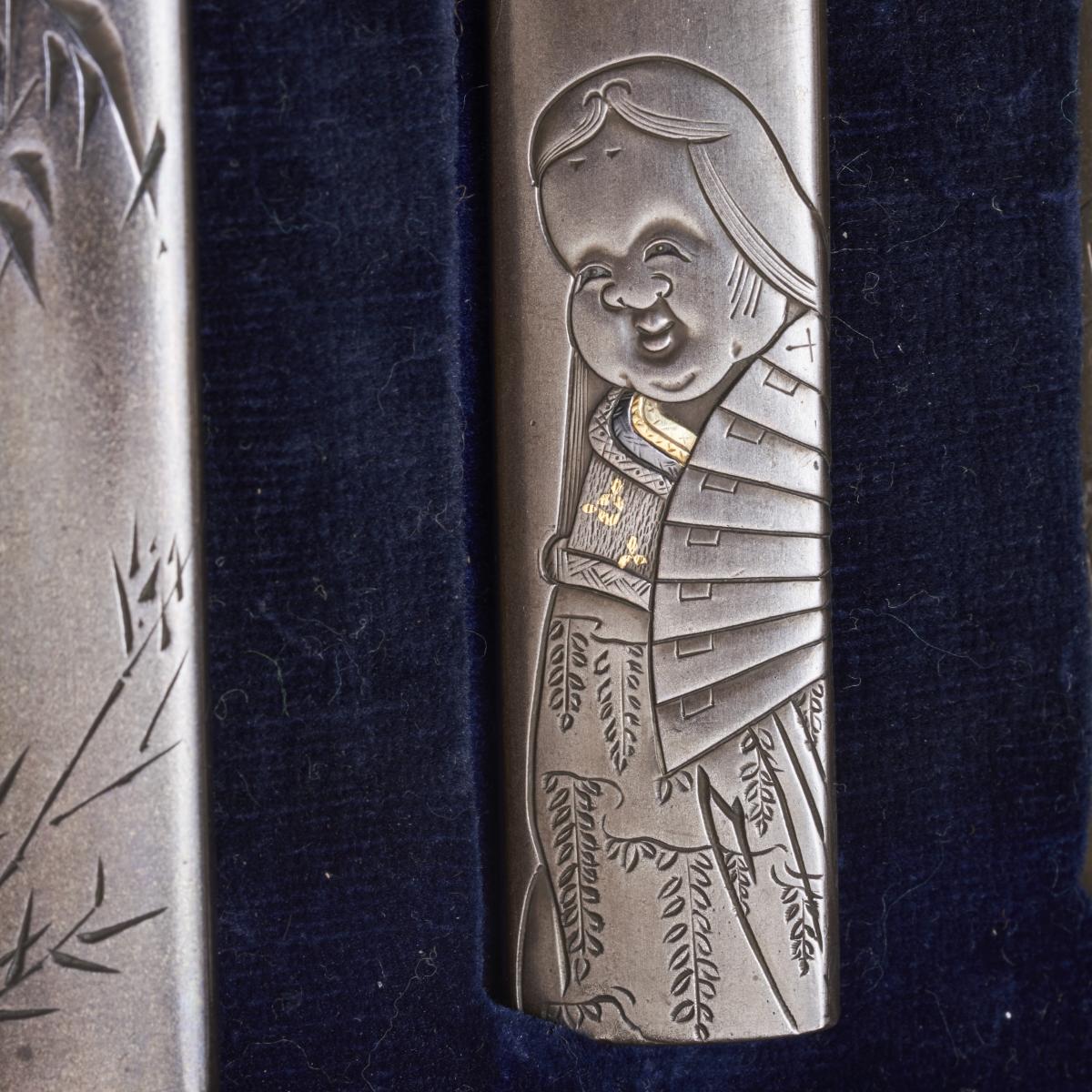
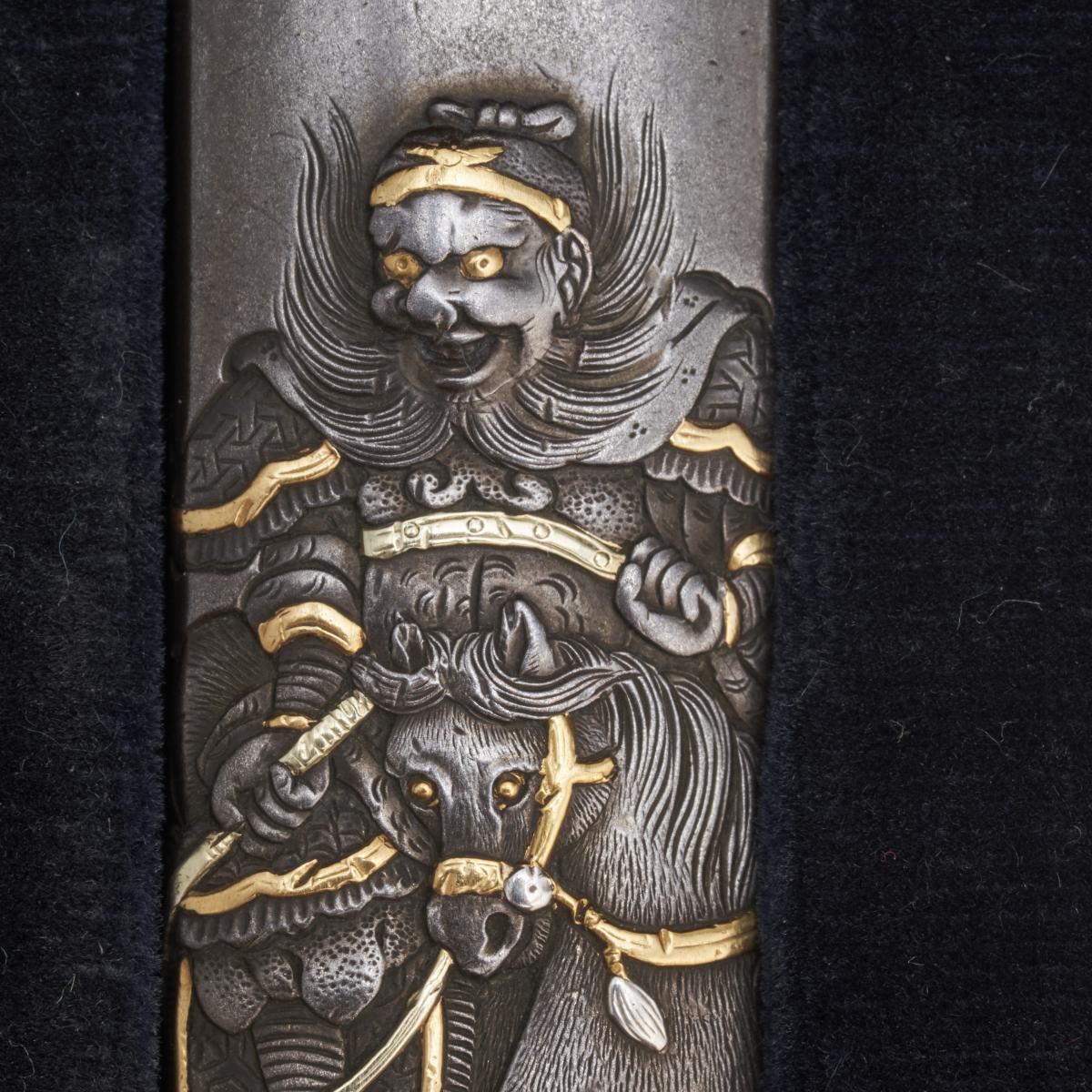
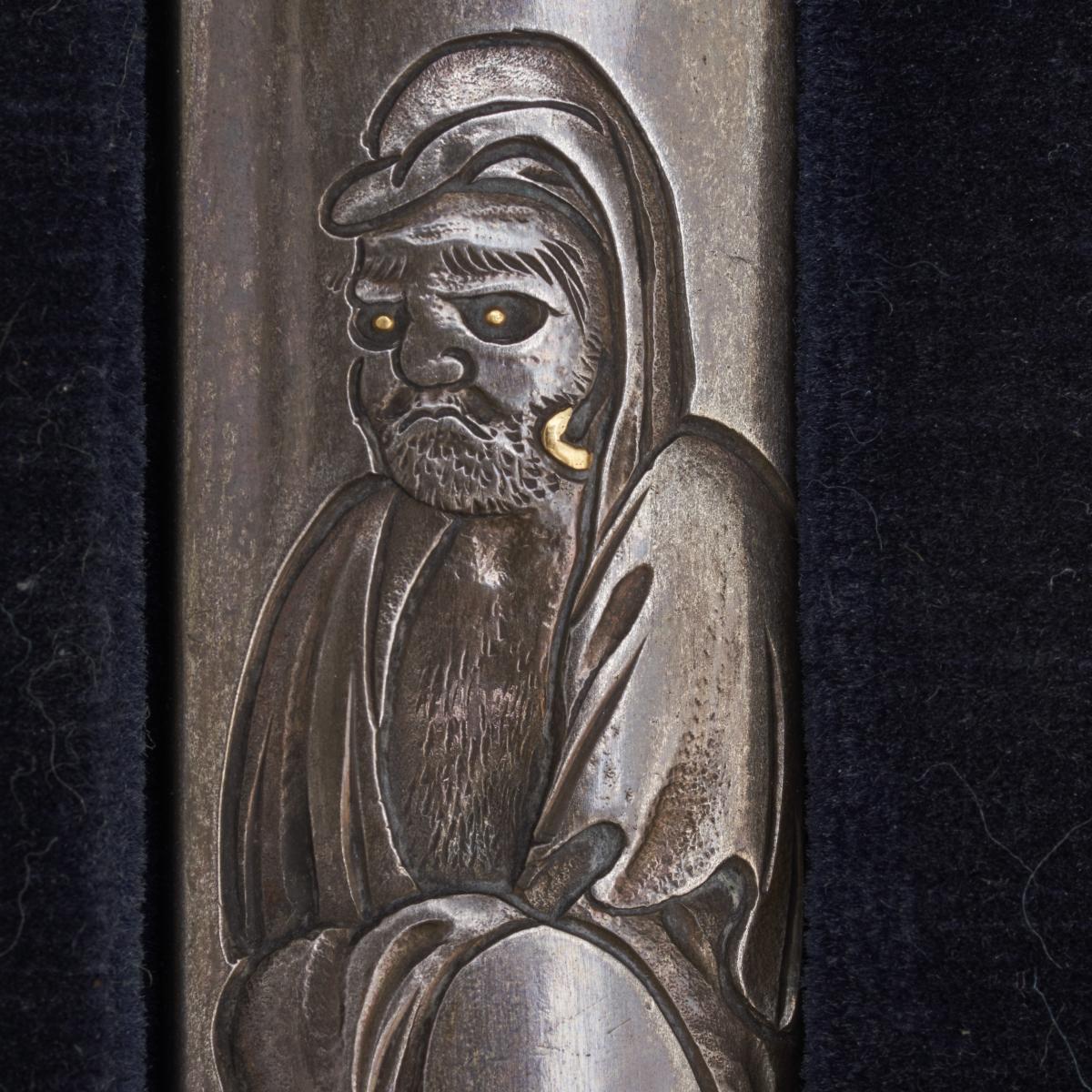
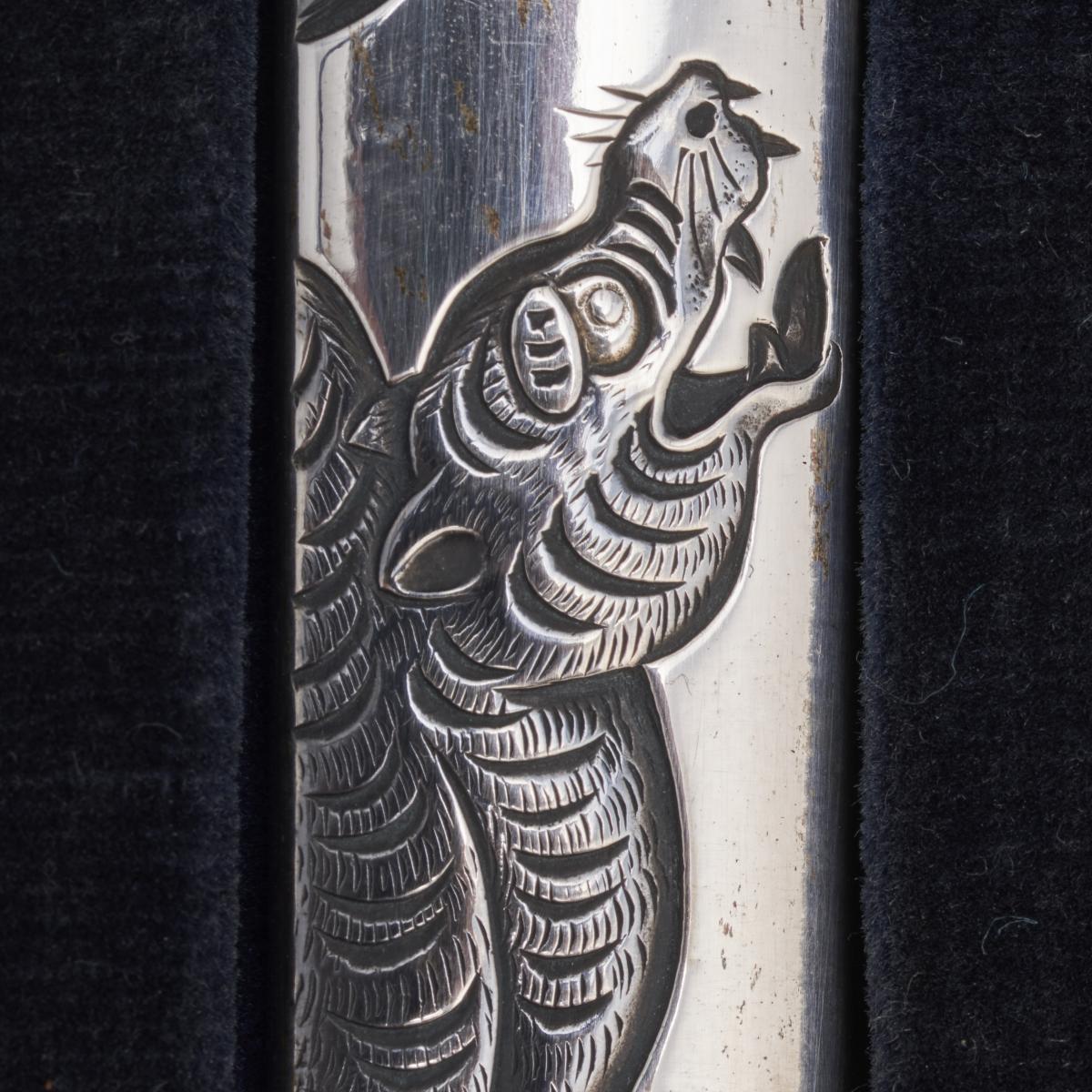
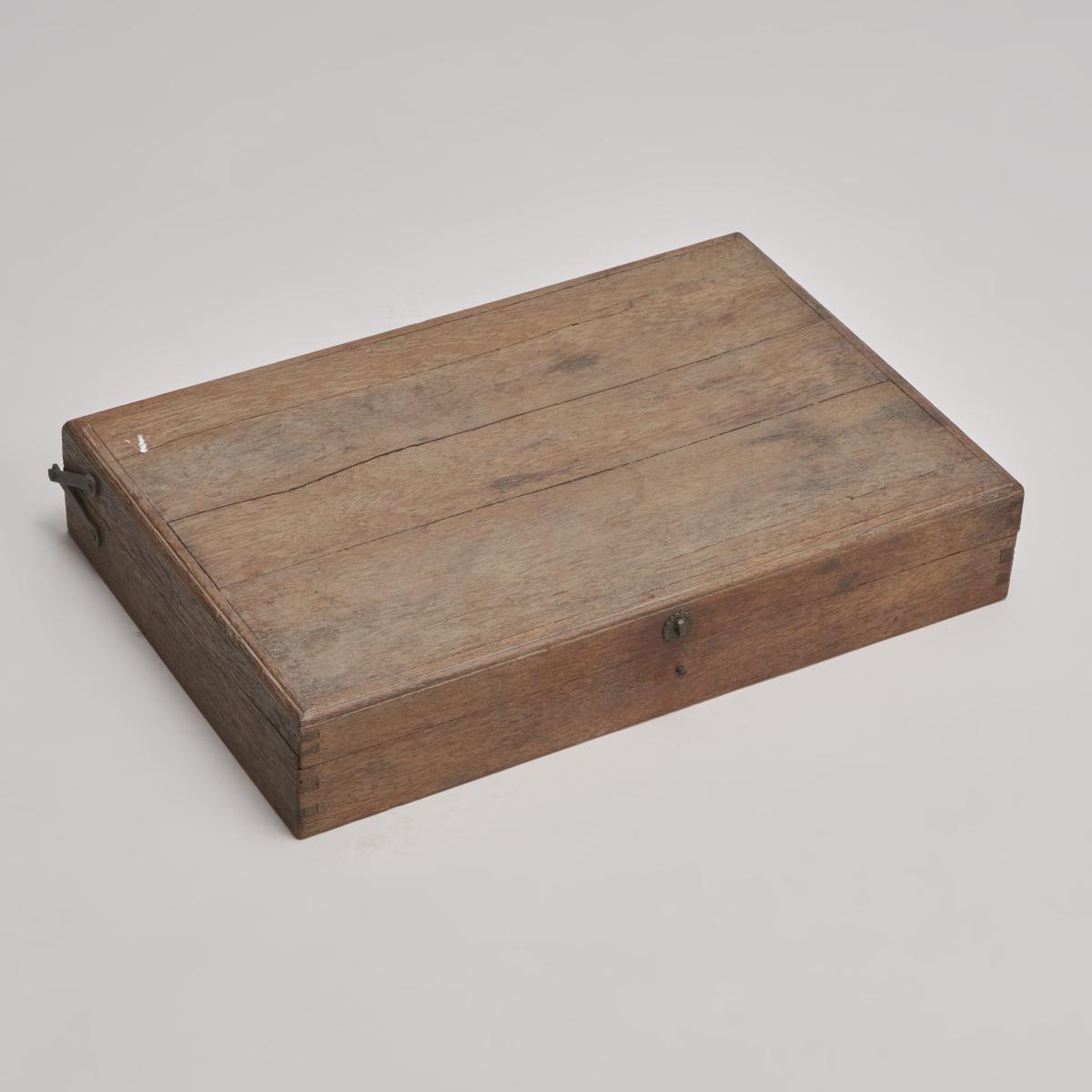
Price
£7850.00This object is eligible for a Certificate of BADA Provenance
The BADA Standard
- Since 1918, BADA has been the leading association for the antiques and fine art trade
- Members are elected for their knowledge, integrity and quality of stock
- Our clients are protected by BADA’s code of conduct
- Our dealers’ membership is reviewed and renewed annually
- Bada.org is a non-profit site: clients deal directly with members and they pay no hidden fees
From our collection of Japanese Meiji-era metalwork, this export knife and fork fruit set comprised of twelve Japanese Kozuka handles with Chinese silver blades and forks.
This set of cutlery is unusual in that it is a combination of Japanese and Chinese work, (due to culture and conflict throughout the years this is a rare occurrence.)
This set would have been made for export to the west. The knife blades and fork prongs would have been a later addition to the Kozuka (handles) which would have originally been the handle of a Kogatana, the small knife sometimes attached to the scabbard (Saya) of the Katana or Wakizashi.
The list of subjects of the Kozuka is as follows:
Forks from left to right:
- Bronze with inlaid peach design. Peaches are a common symbol in Japanese art representing immortality or the wish for a healthy life. They are also associated with luck, and the elimination of evil.
- Silver with patinated decoration of Fukurokuju and a peach. Fukurokuju is one of the Seven Lucky Gods, he is the god of happiness, wealth and longevity. He is the only one of the Seven Lucky Gods with the power to revive the dead. He shares an origin with Jurojin so is similar in appearance, however Fukurokuji’s head is much longer, usually the same length as his body and he usually wears Chinese clothes.
- Bronze and Shakudo with Daruma crossing the water on his magic reed.
- Bronze with a rock formation and moon peering from behind a cloud. The moon is the subject of much mythology in Japan, it’s depiction can symbolize national well-being (From Shinto beliefs) or inner enlightenment (Buddhist beliefs)
- Bronze with a fisherman sailing a boat near an island with tombstones.
- Bronze with a design of Guan Yu on his famous horse red Hare on a wooden jetty. Guan Yu is of Chinese origin but is a popular Character in Japan. Sstories of his exploits and depictions of him are common in Japanese art. He is usually seen with his famous Green Dragon Guandao (double edged pole blade) and sometimes on the legendary horse ‘Red Hare’.
- Silver with a well worn image of Ebisu one of the Seven Lucky Gods. Ebisu is god of wealth in business and abundance in crops, he is usually dressed as a fisherman.
- Silver featuring a stylised Tiger. The Tiger is one of the twelve animals of the Zodiac, and in Japan is also the symbol for Autumn and the Northern Islands. Together with the Dragon, the Tiger is said to govern the elemental forces of wind and rain, the pairing of the two is believed to bring peace.
- Bronze with multi-metal decoration of two Egrets flying over large fruits, perhaps lotus seed heads.
- Silver with a carved Dragon design. Dragons are hugely significant in Asian culture. Known as the Ryu or Tatsu in Japan, they are closely related to the Chinese Long and Korean Yong. Like all Asian Dragons, they lack wings and are serpent-like in form. The Japanese dragons rarely fly and usually reside in or near the sea and other bodies of water.
- Bronze with a miniature scene of people promenading along a river-front.
- Shibuichi with a simple design of a dancing Fukurokuju.
Knives from left to right:
- Bronze with inscribed decoration of a herd of wild horses. The Horse is one of the twelve animals of the Zodiac, in Japan they are associated with Samurai and warfare and represent power and refinement.
- Silver with inscribed decoration of Hotei with a child on his shoulder, looking at the moon. God of fortune and children, he is also known as laughing Buddha he is a fat jolly figure who often carries round a large sack.
- Bronze with carved decoration of the Sseven Lucky Gods. In Japan the seven lucky gods or seven gods of fortune grant good luck and are often represented as a group or on their own in Japanese art.
- Bronze with simple decoration of Bamboo. Bamboo is a symbol of purity and innocence, due to it’s extensive root structure it is also revered for it’s strength and for years if there was and earthquake people were told to run into a bamboo grove as it’s roots would hold the earth together.
- Bronze with a simple design of a Shojo spirit. A Shojo is a Japanese sea spirit with red hair and a love of alcohol, Shojo are usually jovial friendly characters who enjoy dancing. In Japanese several red plants and animals have the word Shojo, as part of their names including the Orangutan and the acer tree.
- Bronze with a silver stripe decorated with a monk entangled in a tree.
- Well worn iron with a rubbed image of Fukurokuju.
- Iron with decoration of cherry blossom in front of a golden moon. Cherry blossom is a well known symbol of Japan, it is beautiful but fleeting, it represents spring, a time of renewal and reminds us of the fleeting nature of life.
- Bronze with multi-patinated floral decoration.
- Bronze with a Shakudo carp swimming up stream.
- Silver with multi-metal decoration of a stump of wood with blossoms and falling leaves.
- Iron with inscribed decoration of a washerman looking up at a silver moon.
Some of the Kozuka are signed. The silver fittings are signed Wang Hing 90.
Dimensions
The box is 38cm x 26cm x 7cmCondition report
Very good. As shown in imagesStock number
KPME104The BADA Standard
- Since 1918, BADA has been the leading association for the antiques and fine art trade
- Members are elected for their knowledge, integrity and quality of stock
- Our clients are protected by BADA’s code of conduct
- Our dealers’ membership is reviewed and renewed annually
- Bada.org is a non-profit site: clients deal directly with members and they pay no hidden fees


